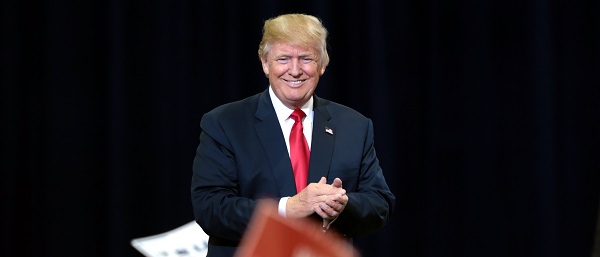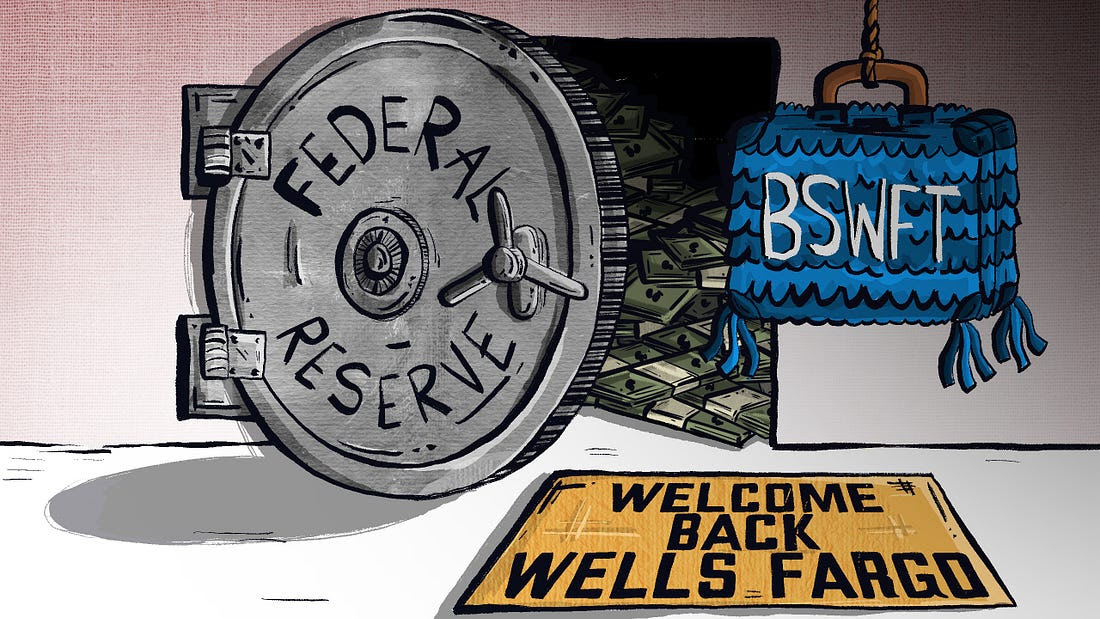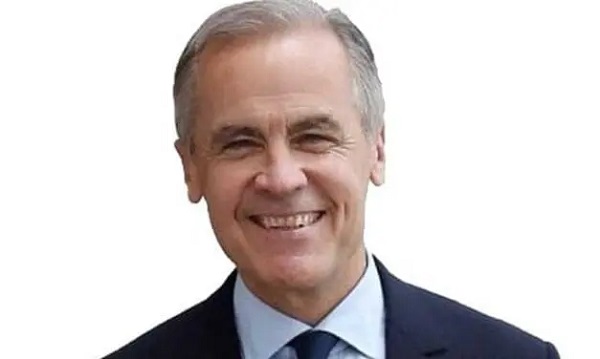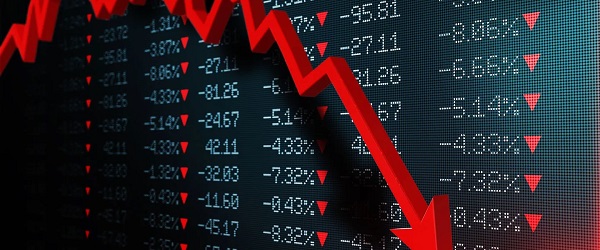Business
Companies Scrambling To Respond To Trump’s ‘Beautiful’ Tariff Hikes

 From the Daily Caller News Foundation
From the Daily Caller News Foundation
By Adam Pack
Companies are scrambling to respond to President-elect Donald Trump’s “beautiful” tariff proposals that his administration may seek to enact early in his second term.
Proactive steps that companies are taking to evade anticipated price increases include stockpiling inventory in U.S. warehouses and weighing whether they need to completely eliminate China from their supply chains and raise the price of imported goods affected by tariff hikes, whose costs will be passed onto consumers.
Free-trade skeptics are touting companies’ anticipatory actions as delivering a clear sign that Trump’s proposed tariff hikes are already achieving their intended effect of pressuring retailers to eliminate China from their supply chains. However, some policy experts are warning that higher tariffs will be a regressive tax for America’s lower and middle-income families and make inflation worse, according to retailers and economists who spoke to the Daily Caller News Foundation.
On the campaign trail, Trump proposed a universal tariff of up to 20% on all imports coming into the U.S. and a 60% or higher tariff on all imports from China. Trump is considering Robert Lighthizer, the former U.S. trade representative during his administration’s first term who is well-known for favoring high tariffs, to serve as his second administration’s trade czar, the Wall Street Journal first reported.
PRESIDENT TRUMP: "The word tariff to me is a very beautiful word because it can save our country, truly… I saved our steel industries by putting tariffs on steel that China came in and dumped… They had committees that were put in charge of what to do with the money. We were… pic.twitter.com/jj88zenMRP
— Trump War Room (@TrumpWarRoom) October 2, 2024
‘Mitigation Strategies To Lessen The Impact’
Companies are taking preemptive measures, such as stockpiling goods in U.S. warehouses, to work proactively against anticipated price increases that higher tariffs would inflict, Jonathan Gold, vice president of supply chains and customs policy for the National Retail Federation, told the DCNF during an interview.
“They’re looking at different mitigation strategies to lessen the impact that they might feel from the tariffs,” Gold told the DCNF. “One of those strategies is to start looking at potentially bringing in cargo, bringing products earlier to get ahead of potential tariffs that Trump might put in place.”
Importing goods into the U.S. ahead of schedule leads to additional costs for retailers that will likely be passed onto consumers, but waiting to import goods from China after a 60% or higher tariff on Chinese imports goes into effect would be substantially more expensive, according to Gold.
A recent NRF study projected that Trump’s proposed tariff hikes on consumer products would cost American consumers an additional $46 billion to $78 billion a year.
“A tariff is a tax paid by the U.S. importer, not a foreign country or the exporter,” Gold said in a press release accompanying the study. “This tax ultimately comes out of consumers’ pockets through higher prices.”
Decoupling From China
Part of the rationale behind Trump’s tariff proposals is to force manufacturing jobs to return to the United States and pressure companies to completely eliminate China from their supply chains, according to Mark DiPlacido, policy advisor at American Compass.
“I hope in addition to stockpiling, they’re also looking at actually moving their supply chains out of China and ideally back to the United States,” DiPlacido told the DCNF.
“For a long time, the framing has been what is best for just increasing trade flows, regardless of the direction those flows are going. What that’s resulted in for the last 25 years is a flow of manufacturing, a flow of factories and a flow of jobs, especially solid middle class jobs out of the United States and across the world,” DiPlacido added.
But completely shifting production outside of China is not feasible for some retailers even if companies have taken further steps to diversify their supply chain for the past decade, according to Gold.
“It takes a while to make those shifts and not everyone is able to do that, Gold acknowledged. “Nobody has the [production] capacity that China does. Trying to find that within multiple countries is a challenge. And it’s not just the capacity, but the skilled workforce as well.”
In addition, companies who move production out of China to avoid a 60% tariff on imported goods from the nation could still get hit by a 20% across the board tariff if they move their supply chain to countries other than the United States, Gold and several economists told the DCNF.
“They’re talking about tariffs on imports for which there’s not a domestic producer to switch to,” Clark Packard, a research fellow on trade policy at the CATO institute, told the DCNF in an interview. “For example, we don’t make coffee in the United States, so why are we going to impose a tariff on coffee?”
“Who are we trying to protect?” he added.
Some economists are also pessimistic that the president-elect’s planned tariff hikes will ultimately bring jobs that moved overseas to cheaper labor markets back to the United States.
“What we actually saw from the 2018-2019 trade war was a decrease in manufacturing output and employment because of the tariffs,” Erica York, senior economist and research director of the Tax Foundation’s Center for Federal Tax Policy, told the DCNF in an interview. “It played out just like every economist predicted: higher costs for U.S. consumers, reduced output, reduced incomes for American workers, foreign retaliation that’s harmful.”
The president-elect’s proposed tariff hikes could also eliminate more jobs than those saved or created as a result of protecting domestic industries, such as the U.S. steel or solar manufacturing industries, that may benefit from higher tariffs on foreign competitors, Packard told the DCNF.
“It’s disproportionate — the cost that is passed onto the broader economy to protect a very small slice of U.S. employment,” Packard said. Trump’s 25% tariff on imported steel enacted during his first administration slightly increased employment in the U.S. steel industry, but each job that was maintained or created came at a cost of roughly $650,000 that likely killed jobs in other sectors forced to buy more expensive steel, according to Packard.
‘Bipartisan Recognition’
Despite tariffs’ potential to force companies to raise the price of goods they import into the United States, DiPlacido defended Trump’s proposed tariff hikes as essential to eliminating U.S. dependence on China for a variety of strategic goods and consumer products.
“We need to be able to manufacture a broad range of goods in the United States. And we need the job security and the economic security that a strong manufacturing industrial base provides,” DiPlacido said. “That’s going to be important to any future conflict or emergency that the United States may have with China or with anyone else.”
DiPlacido, citing Trump’s dominant electoral performance, also believes Trump has the “mandate” to carry out the tariff proposals he floated during the campaign.
“There’s a sort of a bipartisan recognition of the problem. Even the Biden administration kept almost all of Trump’s tariffs in place,” DiPlacido told the DCNF. “I think he has the political mandate, and that’s often a harder thing to get.”
However, some economists are questioning whether the thousands of dollars of projected costs that American families would be forced to pay as a result of these tariff hikes could create political backlash that has so far failed to materialize against Trump and Biden’s relatively similar trade policies.
“Voters were rightly pretty upset about price increases and inflation,” Packard told the DCNF. “We’re talking about utilizing a tool in tariffs that will increase relative prices.”
“Tariffs as a whole are a regressive tax,” Gold told the DCNF. “They certainly hit low and middle income consumers the hardest.”
Retailers are forecasting a decrease in demand for consumer products as a result of Trump’s tariff proposals, according to Gold.
The incoming Senate Republican leader has also notably criticized Trump’s proposed tariff hikes.
“I get concerned when I hear we just want to uniformly impose a 10% or 20% tariff on everything that comes into the United States,” Republican South Dakota Sen. John Thune, Senate GOP leader, said in August during a panel on agriculture policy in his home state. “Generally, that’s a recipe for increased inflation.”
Business
WEF-linked Linda Yaccarino to step down as CEO of X

From LifeSiteNews
Yaccarino had raised concerns among conservatives and free speech advocates for previously serving as chairwoman of a World Economic Forum taskforce and promoting DEI and the COVID shots.
X CEO, Linda Yaccarino, announced today that she is departing from her position at the social media giant.
“After two incredible years, I’ve decided to step down as CEO of 𝕏,” wrote Yaccarino on X.
“When Elon Musk and I first spoke of his vision for X, I knew it would be the opportunity of a lifetime to carry out the extraordinary mission of this company,” she continued. “I’m immensely grateful to him for entrusting me with the responsibility of protecting free speech, turning the company around, and transforming X into the Everything App.”
“I’m incredibly proud of the X team – the historic business turn around we have accomplished together has been nothing short of remarkable,” she said.
After two incredible years, I’ve decided to step down as CEO of 𝕏.
When @elonmusk and I first spoke of his vision for X, I knew it would be the opportunity of a lifetime to carry out the extraordinary mission of this company. I’m immensely grateful to him for entrusting me…
— Linda Yaccarino (@lindayaX) July 9, 2025
Musk hired Yaccarino in May 2023, seven months after his $44 billion purchase of the tech company, then known as “Twitter.”
At the time, Musk’s choice to take the helm at his newly acquired company raised eyebrows among conservative observers who had earlier rejoiced at the tech mogul’s intent to rescue free speech on the internet but now were troubled about the credentials of the digital platform’s new head.
Their concerns were not without good reason.
Yaccarino had previously served as chairwoman of the World Economic Forum’s “future of work” taskforce and sat on the globalist group’s “steering committee” for “media, entertainment, and culture industry.”
She had also boasted about her role as an early cheerleader for the untested COVID-19 jab.
As 2021–2022 Ad Council Chair, she “partnered with the business community, the White House, and government agencies to create a COVID-19 vaccination campaign, featuring Pope Francis and reaching over 200 million Americans,” according to her biography page at NBCUniversal, where she had been president before being lured to Twitter by Musk.
While at NBCUniversal, she also pushed discriminatory, equity-based hiring practices, based on “diversity” characteristics such as gender and race.
“At NBCU, she uses the power of media to advance equity and helps to launch DEI [Diversity, Equity, Inclusion]-focused initiatives,” recounted her online biography.
For the most part, over the last two years, Yaccarino’s performance at X allayed suspicions free speech activists at first harbored.
“Honestly, I was worried when she was hired but she didn’t burn down the house,” quipped popular conservative X account, @amuse.
Mike Benz, who serves as executive director of the Foundation For Freedom Online, a free speech watchdog organization dedicated to restoring the promise of a free and open internet, was far more effusive in his praise of Yaccarino.
“Linda stood up and fought for free speech during arguably its most acute crisis moment in world history when we were almost on the brink of losing it,” said Benz in an X post. “She stepped up for all of us in the face of what seemed like insurmountable pressure from governments, advertisers, boycotters, banking institutions, and astroturfed lynch mobs.”
Automotive
Federal government should swiftly axe foolish EV mandate

From the Fraser Institute
Two recent events exemplify the fundamental irrationality that is Canada’s electric vehicle (EV) policy.
First, the Carney government re-committed to Justin Trudeau’s EV transition mandate that by 2035 all (that’s 100 per cent) of new car sales in Canada consist of “zero emission vehicles” including battery EVs, plug-in hybrid EVs and fuel-cell powered vehicles (which are virtually non-existent in today’s market). This policy has been a foolish idea since inception. The mass of car-buyers in Canada showed little desire to buy them in 2022, when the government announced the plan, and they still don’t want them.
Second, President Trump’s “Big Beautiful” budget bill has slashed taxpayer subsidies for buying new and used EVs, ended federal support for EV charging stations, and limited the ability of states to use fuel standards to force EVs onto the sales lot. Of course, Canada should not craft policy to simply match U.S. policy, but in light of policy changes south of the border Canadian policymakers would be wise to give their own EV policies a rethink.
And in this case, a rethink—that is, scrapping Ottawa’s mandate—would only benefit most Canadians. Indeed, most Canadians disapprove of the mandate; most do not want to buy EVs; most can’t afford to buy EVs (which are more expensive than traditional internal combustion vehicles and more expensive to insure and repair); and if they do manage to swing the cost of an EV, most will likely find it difficult to find public charging stations.
Also, consider this. Globally, the mining sector likely lacks the ability to keep up with the supply of metals needed to produce EVs and satisfy government mandates like we have in Canada, potentially further driving up production costs and ultimately sticker prices.
Finally, if you’re worried about losing the climate and environmental benefits of an EV transition, you should, well, not worry that much. The benefits of vehicle electrification for climate/environmental risk reduction have been oversold. In some circumstances EVs can help reduce GHG emissions—in others, they can make them worse. It depends on the fuel used to generate electricity used to charge them. And EVs have environmental negatives of their own—their fancy tires cause a lot of fine particulate pollution, one of the more harmful types of air pollution that can affect our health. And when they burst into flames (which they do with disturbing regularity) they spew toxic metals and plastics into the air with abandon.
So, to sum up in point form. Prime Minister Carney’s government has re-upped its commitment to the Trudeau-era 2035 EV mandate even while Canadians have shown for years that most don’t want to buy them. EVs don’t provide meaningful environmental benefits. They represent the worst of public policy (picking winning or losing technologies in mass markets). They are unjust (tax-robbing people who can’t afford them to subsidize those who can). And taxpayer-funded “investments” in EVs and EV-battery technology will likely be wasted in light of the diminishing U.S. market for Canadian EV tech.
If ever there was a policy so justifiably axed on its failed merits, it’s Ottawa’s EV mandate. Hopefully, the pragmatists we’ve heard much about since Carney’s election victory will acknowledge EV reality.
-

 International2 days ago
International2 days agoChicago suburb purchases childhood home of Pope Leo XIV
-

 Daily Caller2 days ago
Daily Caller2 days agoBlackouts Coming If America Continues With Biden-Era Green Frenzy, Trump Admin Warns
-

 Daily Caller2 days ago
Daily Caller2 days ago‘I Know How These People Operate’: Fmr CIA Officer Calls BS On FBI’s New Epstein Intel
-

 Daily Caller16 hours ago
Daily Caller16 hours agoUSAID Quietly Sent Thousands Of Viruses To Chinese Military-Linked Biolab
-

 Addictions16 hours ago
Addictions16 hours ago‘Over and over until they die’: Drug crisis pushes first responders to the brink
-

 Business1 day ago
Business1 day agoPrime minister can make good on campaign promise by reforming Canada Health Act
-

 Automotive14 hours ago
Automotive14 hours agoFederal government should swiftly axe foolish EV mandate
-

 Alberta13 hours ago
Alberta13 hours ago‘Far too serious for such uninformed, careless journalism’: Complaint filed against Globe and Mail article challenging Alberta’s gender surgery law







